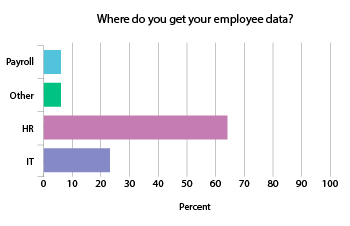If Internal Communication had a battle cry or — better yet — a protest march, the slogan might sound a little bit like this:
What do we want? Credibility with management to get more resources and budget!
When do we want it? NOW!
by Guest Blogger
Resources and budget increases are long overdue for communicators. However, according to the recent State of the Sector report from London-based consultancy Gatehouse Group, internal communicators are bracing themselves for further budget cuts.
Towers Watson research tells us organisations that communicate more effectively and perform better financially achieve better employee and business performance.
The common response from senior leaders to this battle cry would be:
In order for this to happen, Internal Communication needs to prove real business impact and deliver the data to support that impact. Without this data to influence and negotiate with top leaders, the struggle for budgets and recognition will roll on.
However, in a Newsweaver/Melcrum survey only 16% are satisfied with their ability to measure the impact of their internal communications efforts.
Communication professionals surveyed by Ragan, Melcrum, Newsweaver, Gatehouse and Towers Watson, along with many other studies, state that they want to be able to measure and show the results of top campaigns and to use insights to take action and improve results.
Beyond wanting measurement, we actually need to be able to measure all content, including campaigns and channels, in one place. In this way we’ll be able to understand overall performance of internal communications and filter reports by employee data to understand overall reach and impact of communications by audiences across the organisation.
So if measurement can give all these things, why isn’t everyone doing? Simply because it’s just too difficult.
Why is this?
 Internal communicators often don’t own their own data. They have to rely on IT, HR and their colleagues in Marketing to provide them with results.
Internal communicators often don’t own their own data. They have to rely on IT, HR and their colleagues in Marketing to provide them with results.
Even those who do own the data encounter problems, as the tools they use are not fit for purpose — or data exists in silos or in disparate tools, offering no global view.
And when communicators do get data it is often outdated showing only historical or top-level information such as page views, opens, and clicks. What good do page views do when internal communicators can’t apply that information and translate it into engagement by department, business unit and/or employee?
This lack of visibility means that the Internal Communication function doesn’t know what is and isn’t working across channels.
They can’t tell which employees are and aren’t engaging. Internal communicators can’t get actionable insights on campaigns that allow them to take corrective action. Crucially, they can’t show the outcomes i.e. employee awareness, understanding and behaviour changes resulting from internal communication campaigns.
These problems make it not only difficult for communicators to prove the value of their work, but to get budgets and recognition they deserve from senior leaders.
If you are reading this blog post you are already familiar with these issues. What you want to hear about is solutions.
The solution is to be able to measure reach across channels, to be able to be the master of meaningful data across email, video, mobile, SharePoint intranets and social networks like Yammer. To be able to seamlessly measure across all digital communications platforms and use this data to create effective communication strategies, take meaningful action to engage staff and course-correct campaigns that aren’t hitting the mark.
So what does the future of measurement in internal communication look like?
- The future of internal communication measurement won’t be page views.
- The future won’t be stacks of metrics piled in front of each channel.
- The future won’t be channel silos. (Hint: it’ll be a collated view across the organisation.)
Currently, your stakeholders ask you:
- How did Campaign X perform across all your channels?
- How are all of your campaigns doing? Can we get a report?
- What areas of the company are the most and least engaged?
You say…
“I have some stuff from the intranet – a few page views, and a few comments. I also have a percentage of opens on emails. How does that sound?”
Using measurement, your future is this:
The CEO has an urgent message to put out there. You, as a communications professional with a global view across your channels and audiences, run this campaign. You say to your senior leaders, “Here are the employees you asked me to share the message with, here are the people who have seen it, and on what channels. Let’s talk about targeting the audience who have not yet seen this critical message.”
Your future conversations will look like this:
<To your CEO> “How would you like to see total engagement results?” <You present results that truly inform>
- Here is the reach of our campaign across each channel, and as a whole.
- Here is a view of all channel engagement by location, channel, department, audience, device, business unit.
- Here are the most engaged and least engaged audiences in our organisation.
- Here is a view of overall engagement by pay grade.
- Here is insight into our most and least effective leadership communications.
- Here’s a graph showing engagement by channel.
- Here is how this specific message performed across the organisation.
- Here is how specific campaigns performed against each other.
Put those sunglasses on! There’s a bright future ahead.
You can now demonstrate the value of IC to the rest of the organisation. 
You will give them real data and insight.
You will get the budget, and you will also gain the influence and trust of senior leaders in the organisation.
Post Author: Claire O’Brien
Claire is the Inbound Marketing Manager at Newsweaver.
She has been working in the world of communications for a number of years, helping communicators within organisations increase engagement with their audiences. Claire brings her wealth of experience in communications from a ten-year background in external marketing. Her expertise includes content marketing, events planning and also in public relations.
















